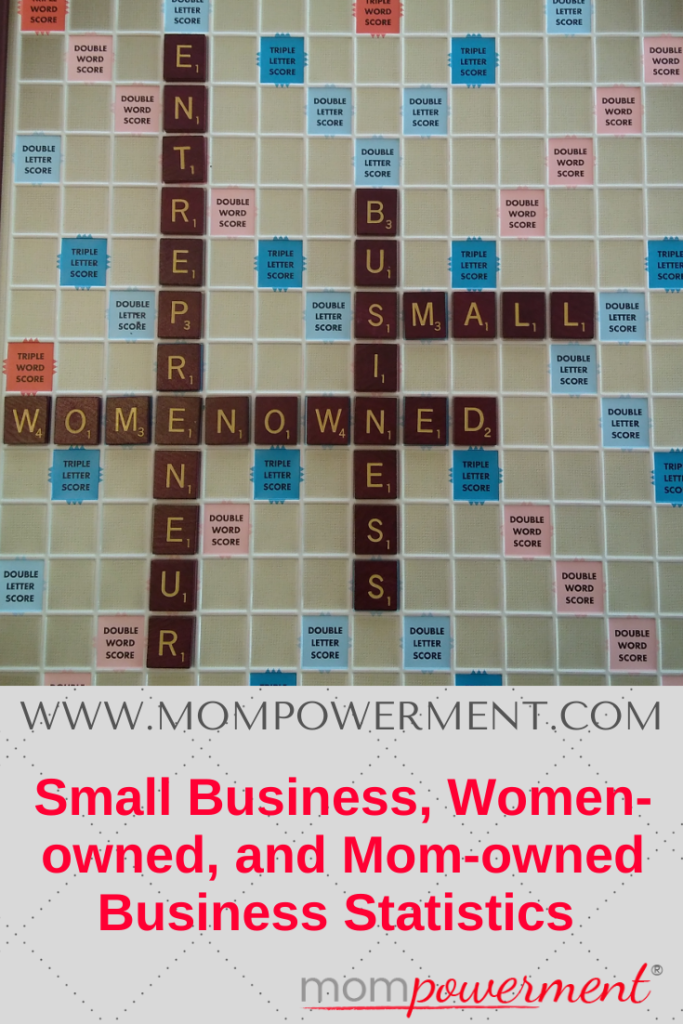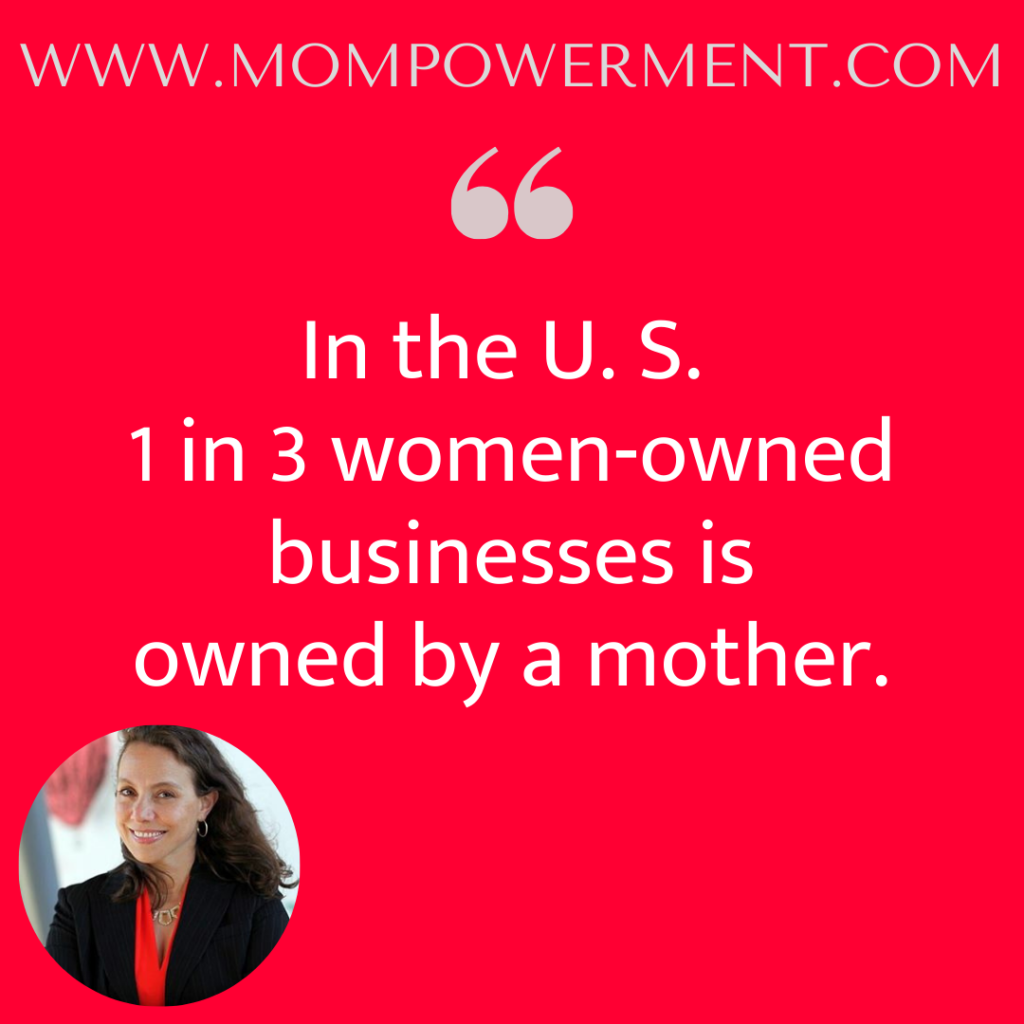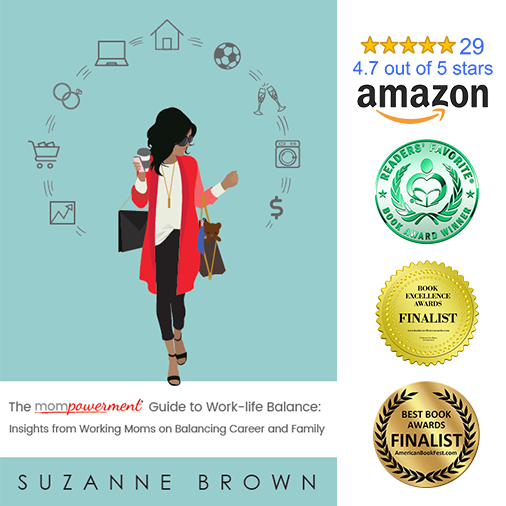
It is Small Business Week in the U.S.! With that in mind, it’s a timely moment to sharing updated information on small businesses, women-owned businesses, and mom-owned businesses to help you understand the impact of this economic engine in the U.S.
Why write about this?
Why am I writing about mom-owned businesses on a blog about work-life balance? For starters, I live this every day as an entrepreneur with two growing businesses. Mom entrepreneurs are also important in my research. About thirty-eight percent of the moms I interviewed for my two books own a business, and I sprinkled their stories throughout my books.
What motivates moms to start a business might provide insights into working moms in the workforce. This could help employers understand what they’re doing right and where they could improve. In my research, I saw that some working moms left the workforce because they couldn’t find an employer that would support their needs.
As a bonus, learning about the impact of mom-owned businesses might be the inspiration needed to nudge a working mom like you or someone you know to start a business. Entrepreneurship can be scary and lonely. Seeing yourself reflected in others and knowing what’s possible might be what you need to take the initiative to start the business you’ve been thinking about.
Small Business Statistics
Small business is near and dear to my heart and research. Small businesses are also crucial to the U.S. workforce and economy. There are 34.8 million (up slightly from 34.3 in 2023) small businesses or about 99.9 percent of U.S. businesses, according to the 2024 Small Business Profile report from the Small Business Administration Office of Advocacy.1 This percentage seems to have remained consistent over the past few years. Those small businesses employ roughly 59 million (slightly down from 61.6 million in last year’s report).1 Small businesses provide jobs to 45.9 percent of U.S. employees in the private workforce.1
Here’s another impressive statistic: small business created 55 percent of jobs between 2013 and 2023!2 And, between March 2022 and 2023, small businesses created 80 percent of new jobs.1
Women-Owned Business Statistics
I’ve seen different statistics on the actual percentage of small businesses that are owned by women. According to the 2024 Small Business Office of Advocacy Small Business Profile summary, women own about 44.1 percent of small businesses in the U.S., which is more than 15 million businesses.1 (This includes fully and partially owned by women.) According to the 2024 Wells Fargo Impact of Women-Owned Businesses (a partnership of Wells Fargo, Ventureneer, CoreWoman, and Women Impacting Public Policy (WIPP)), when you combine all the women-owned businesses, they are generating about $2.7 trillion per year.3 That is a lot of money supporting the economy!
And there are conflicting data points on the growth of women-owned businesses during the pandemic. I’ll share two here:
An article on the CFA Institute website shared that the number of women-owned businesses is growing.4 Barbara Stewart, CFA, researcher, and author on women and finance issues uncovered some interesting statistics and qualitative data on women-owned businesses during the pandemic based on printing and design businesses in late 2020. Orders for printing (e.g., business cards, brochures, etc.) are largely coming from what are likely new women-owned businesses. (Think about it, you’re often new, growing, or moving into a new area when you want new stuff printed.) For some printers, as much as 78 percent of customers are female business owners paying for services.5
Another company’s experience also shows that female entrepreneurship grew during and shortly after the pandemic. Payroll and benefits company Gusto shared findings from a survey: 49 percent of new businesses polled are women-owned.5 “In 2019, women accounted for just 29% of new business owners. That share shot up to 49% in 2020 and has stayed near that level since.”

A Deeper Look at Women-owned Business
Wondering why women started new businesses during the pandemic? Gusto asked that in its survey. It’s not surprising that the most common reason women surveyed (in the 2023 survey) started a business is to have more flexibility.5 If you think back to the pandemic and the desire for more flexibility, it’s no surprise that this led to more women starting businesses.
- 70% of new female business owners want more flexibility
- 16% want or need supplemental income
- 37% want more financial stability
What types of businesses do women start? In the Wells Fargo Impact of Women-Owned Businesses report, women often provide an essential service in the marketplace.3 “They often provide essential services such as child-, elder-, special needs-care, and other healthcare and social assistance, and education services…Women start these businesses because they are passionate about providing products and services in these sectors and because they can start these businesses without needing much outside capital.”3 The report provides a breakdown of the top types of firms that women start/own3:
- 16.2% Other services (hair and nail salons, pet care, laundries, and dry cleaners)
- 14.4% Professional, scientific, and technical services (legal, bookkeeping, and consulting businesses)
- 11.9% Administrative, support and waste management, and remediation services (office administration, staffing agencies, and security and surveillance services)
- 11.3% Healthcare and social assistance (child day care and homecare providers, mental health practitioners, and physicians)
Three of these categories appeared in the 2018 State of Women-Owned Business Report commissioned by American Express. Administrative, support and waste management, and remediation services is a new category on the list.6
There is a key challenge in many of these categories. While these businesses might be easier to create, they are not generally big moneymakers. These “women-owned nonemployers—nearly 90% of all women-owned businesses—average less than $50,000 [in revenue].”6
Mom-Owned Business Statistics (aka Mompreneur Statistics)
(This part is why I originally started sharing this information several years ago. These statistics are hard to find, so I wanted to aggregate that here along with the small business statistics.)
If you’re a mom and you’re wondering about mom-owned business statistics or the impact of mompreneurs, look no further. Several years ago, an article in the now-shuttered Working Mother magazine estimated that 1 in 3 women-owned businesses is owned by a mom. That number is pretty amazing, translating to about 5 million businesses. Yay for mom entrepreneurs!!!
A recent Shopify study shared that mom entrepreneurs might be on the rise. Of the 1500+ working parents who were polled, more than 60 percent of mothers were interested in supplementing their income through entrepreneurship.7
Did something in this article surprise you? Interested in additional information? Do you have thoughts on the impact of small businesses in your hometown or the economy in general? I’d love to hear from you in the comments.
Curious about the impact of working mothers as employees in the workforce? Check out my article, The Importance of Working Mothers in the Workforce, for some eye-opening information to help you understand why we need to support working moms looking to move to new opportunities as part of the Great Realignment (it’s not simply a Great Resignation) or trying to come back to the workforce after leaving during the pandemic.
Interested in starting a business, but don’t know where to begin? The Mompowerment Guide to Work-life Balance can help you work smarter so you have more time for things like starting a side gig that becomes your main focus down the road. Grab your copy on Amazon today! (As an Amazon Associate I earn from qualifying purchases.)
1 https://advocacy.sba.gov/wp-content/uploads/2024/11/United_States.pdf
1 https://advocacy.sba.gov/wp-content/uploads/2023/11/2023-Small-Business-Economic-Profile-US.pdf
3 https://stories.wf.com/wp-content/uploads/2024/03/IWOB-2024-report_JD-V9_a11y.pdf
5 https://gusto.com/company-news/new-business-formation-report-2024
6 2018 State of Women-Owned Business Report commissioned by American Express
7 https://www.shopify.com/blog/mom-entrepreneurs


